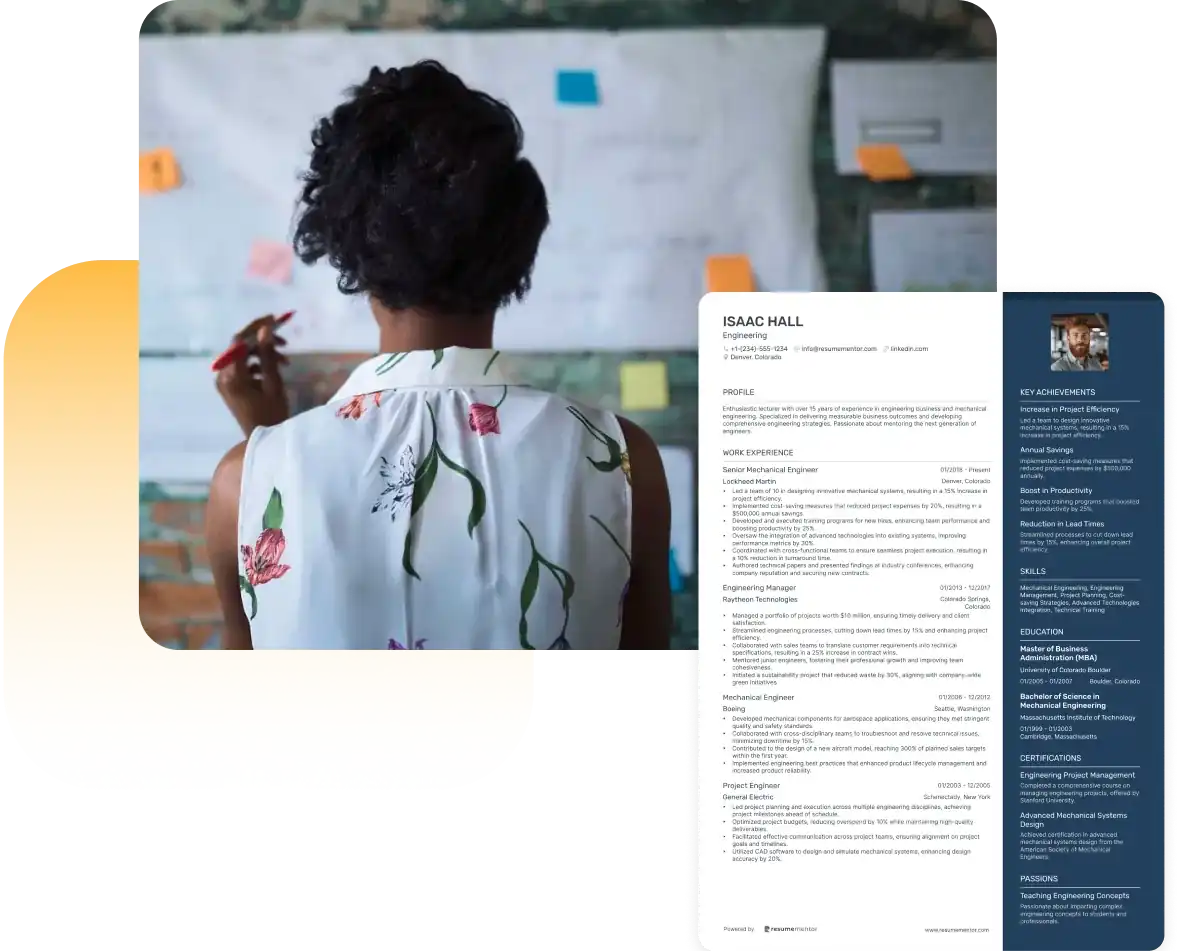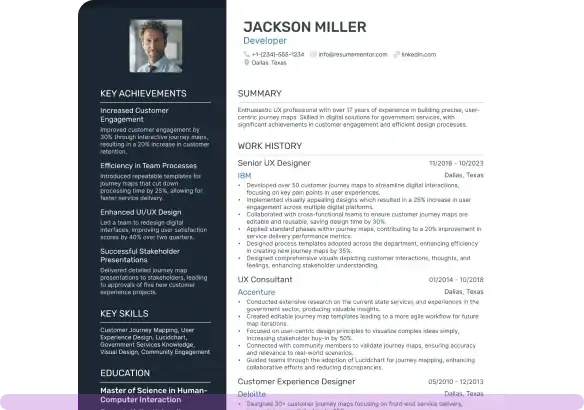How to Upskill Yourself Now to Future-Proof Your Career

May 27, 2025
|
12 min read
Discover practical ways to build new skills and stay relevant in today’s fast-changing job landscape.
Upskilling is the process of enhancing your current skills to stay relevant in a fast-changing job market. Whether you’re aiming to advance in your current role or adapt to new industry demands, learning new skills is essential for your upskill journey.
In this article, you’ll discover what upskilling involves, why it’s crucial, and effective techniques to get started.
Key takeaways
- Upskilling is essential for staying relevant in a rapidly changing job market, enhancing existing skills for career advancement.
- Effective upskilling techniques include online courses, microlearning, mentorships, and coaching, facilitating continuous learning and development.
- Organizations should support upskilling through training programs and development opportunities to improve employee engagement and retention.
Understanding upskilling
Upskilling involves evolving your skills to keep pace with industry changes, stay relevant, and remain competitive. It’s about enhancing your existing skill set to achieve personal goals and build your professional value.
In a world where continuous learning is crucial, upskilling keeps individuals relevant in a fast-changing digital environment.
What is upskilling?
Upskilling is the ongoing process of enhancing an individual’s current skill set. It’s necessary to stay competitive and adapt to changing job demands. The focus is on improving existing skills to ensure employees can perform their current work and thrive in future roles. Upskilling means ensuring that the workforce is prepared for the challenges ahead.
Whether you’re in nursing, marketing, business, or teaching, upskilling applies across various career fields. It’s a strategic approach to professional development, helping job seekers achieve their career goals and advance.
PRO TIP
Upskilling isn't a choice when it comes to developing a future-proofed career, but a requirement. The job market is changing rapidly due to AI automation, digitalization, and changing industry needs. Stagnation simply isn’t a choice at this moment in time, as it might mean lost opportunities.
Upskilling vs. reskilling
Though often mentioned together, upskilling and reskilling serve different purposes. Upskilling enhances current skills for advancement within the same role, while reskilling involves acquiring new skills to transition into a different role or career.
Upskilling improves current skills to close gaps and boost career growth, whereas reskilling involves learning new skills for a job market or career change. Both are crucial for career advancement, but understanding their differences aids in creating a focused strategy.
PRO TIP
Be proactive. Whether you're looking for promotion through the ranks at work, a career change, or are just concerned about keeping up to date with the rapid changes we're all seeing with AI, this is how you take charge of your own career path.
Effective techniques for upskilling
Effective upskilling techniques are vital for professional development. Methods such as online courses, microlearning sessions, mentorship programs, and coaching can enhance your skills. Modern training methods that are relevant, convenient, and engaging facilitate effective learning.
Patience is key, as learning takes time and cannot be rushed.
Online courses and learning platforms
Online courses offer a flexible way to upskill, allowing learners to progress at their own pace in the course of their studies. Mobile apps facilitate training by providing access to materials anytime, anywhere. Diverse formats, including hands-on experiences and virtual learning, cater to various preferences, enhancing engagement.
Access to online courses and webinars empowers employees to take charge of their learning. This approach aligns with lifelong learning and continuous professional development, making it integral to any upskilling strategy.
PRO TIP
My advice? Look past the course outline and resources—check out student feedback and review instructor credentials before signing up.
Your time is precious, so don’t waste it on choosing a sub-par course. Choose a highly rated course from a subject matter expert that is industry-approved.
Bonus points if the course also has a certificate you can use on your LinkedIn profile or resume—it’s a great way to be able to show dedication to a development effort.
Microlearning sessions
Microlearning sessions are short, focused bursts that enhance critical thinking and knowledge retention. By blending training formats, including microlearning, organizations can cater to various learning styles, enhancing engagement and making upskilling more effective.
Mentorship programs
Mentorship programs offer personalized guidance from experienced professionals. Mentors provide valuable insights, helping mentees navigate their upskilling journey and fostering personal and professional growth.
Mentorship programs can enhance employee satisfaction and retention by supporting skill development. Through mentoring, organizations create a supportive environment that promotes continuous learning and career progression.
Coaching and feedback
Coaching offers tailored guidance to help individuals achieve specific skill development goals. Unlike traditional mentoring, coaching involves specialized training, making it more personalized and focused on unique needs.
Performance evaluations and continuous feedback are crucial in coaching, helping individuals refine skills and build confidence. If unsure about applying new skills immediately, practicing on personal projects can help build competence.
Importance of upskilling in today's job market
In today’s fast-paced job market, upskilling is essential for maintaining relevance and competitiveness. It helps employees secure their jobs, enhance adaptability, and avoid obsolescence in rapidly evolving markets.
Upskilling efforts allow employees to keep pace with the latest developments, tools, and industry trends, enhancing their effectiveness in the workplace.
PRO TIP
Upskilling doesn’t just mean taking courses. Subscribe to reputable industry publications and newsletters, become a follower of industry influencers on LinkedIn, and partake regularly in virtual events or webinars.
This is how you keep on the cutting edge and allows you to see what skills are must-haves— before they are a requirement.
Adapting to industry trends
Demand for upskilling and reskilling has risen by 15% since June 2020, underscoring the need to stay current with industry trends in one’s current role. By analyzing job descriptions and focusing on required skills, individuals can address skill gaps and adapt to changing job market demands.
Analytical skills are crucial for some of the fastest-growing occupations, with statisticians projected to see a 35% growth rate from 2019 to 2029. Staying informed about industry trends and continually upskilling is essential to remain competitive and seize growth opportunities.
Enhancing career path opportunities
Upskilling can facilitate transitions into roles requiring advanced expertise, broaden career prospects, and create upskilling opportunities. By acquiring new skills, individuals can move into higher-level roles, enhancing their career path and achieving advancement.
Leadership training fosters essential skills like strategic thinking and decision-making, vital for future leaders. These elements illustrate how upskilling can enhance career path opportunities and promote professional growth.
Increasing job satisfaction
Engaging in upskilling can create a sense of accomplishment and fulfillment. Acquiring new skills often leads to employees feeling more competent and confident in their roles, making their work more satisfying.
Actively pursuing upskilling helps meet professional growth objectives, leading to happier employees and a more positive workplace environment. Investing in employee engagement and development is key to enhancing job satisfaction and retention.
Benefits of upskilling
Upskilling focuses on advancing your career across multiple facets, helping you stay competitive and achieve your goals. It addresses skill shortages, enhances engagement, and fosters both personal and professional development.
Companies gain a strong return on investment by investing in upskilling programs to save money for the company, employees, and other businesses.
Higher earning potential
Upskilling can significantly boost salary prospects as employees gain new qualifications. Acquiring advanced skills often leads to a new job, making it a financially rewarding investment.
PRO TIP
From my experience, when you invest in yourself, you not only can achieve a higher earning capacity but you also build the confidence required to go further in your profession and bring more value.
Improved employee retention rates
Upskilling directly improves retention rates, making it a crucial investment for organizations. Employees are more likely to stay with companies that invest in their skill development, fostering greater engagement and satisfaction.
Personal and professional growth
Continuous learning fosters a growth mindset, leading to both personal and career advancement. Engaging in upskilling programs enhances creativity and promotes overall personal growth.
Training in soft skills contributes to a more positive and collaborative workplace culture. Investing in soft skills training improves interpersonal relationships and fosters a cooperative environment.
Steps to start your upskilling Journey
Starting your upskilling journey requires a step-by-step approach. Begin by setting clear career goals, identifying skills gaps, creating a strategy, and engaging in continuous learning to start upskilling.
Set clear career goals
Setting specific career goals helps direct your learning efforts. Adjust your career goals as you develop new skills through upskilling, and consult with achievers or review job postings to identify gaps.
Identify skills gaps
Identify skills gaps by comparing your existing skills against those listed in job postings. Organizations can also identify lacking skills through surveys, performance evaluations, and consultations with department heads.
Knowledge gaps are barriers to achieving career goals, highlighting the need for continuous assessment and development. Recognizing these gaps is crucial for personal growth and aligning your skills with market demands, closing skill gaps.
Create an upskilling strategy
Identifying knowledge gaps helps focus your learning efforts. Plan a curriculum that includes various educational and training opportunities to find opportunities for coaching and personalized support.
Allocate specific timeframes for upskilling, such as dedicating half an hour a day, and budget for learning options by considering free courses or monthly subscriptions.
Engage in continuous learning
Continuous learning is essential for effective upskilling and staying relevant in a rapidly changing market. Adopt a beginner’s mind, approaching learning with openness and curiosity. Setting aside dedicated time for learning can significantly improve participation and success.
PRO TIP
Upskilling isn’t merely a career tactic; it’s a whole shift in how you think. It’s about declaring, “I won’t just sit back and wait for change; I’m gearing up for it right now.”
Every little skill you enhance, no matter how minor, adds to your personal toolkit. Over time, those small efforts can snowball into significant opportunities, like promotions, career changes, or even starting your own business.
Whether through online courses or microlearning sessions, continuous learning ensures you are prepared to face new challenges and seize opportunities. This commitment helps close skill gaps and achieve career advancement.
How organizations can support upskilling
Organizations play a pivotal role in supporting upskilling by closing digital talent gaps and saving hiring costs. Investing in employee upskilling enhances engagement, improves retention, and reduces recruitment costs.
A strong learning and development (L&D) program attracts high-quality talent and promotes internal mobility.
Identifying organizational skill needs
Identifying skill gaps within the organization is the first step in developing an effective upskilling strategy. Surveys and assessments can accurately measure gaps, informing about necessary resources and activities.
Engaging stakeholders across various levels enhances the assessment of skill requirements, ensuring a comprehensive understanding. A continuous skills audit is essential to adapt training programs to evolving needs.
Implementing training programs
Implementing a training program can be streamlined with a learning platform (LMS), which delivers training content, assesses success, and provides analytics. An LMS tracks completion and performance, helping improve future training efforts.
AI-driven platforms can tailor training programs based on real-time employee data, ensuring relevant and effective upskilling through artificial intelligence.
Providing development opportunities
Motivating employees to learn new skills can be achieved by offering financial incentives. Companies can encourage upskilling by increasing training budgets, providing educational rebates, and offering grants.
Effective communication is crucial to understanding employee needs and desires. Many online learning platforms provide financial assistance, making it easier to access resources for development.
PRO TIP
Honestly, the most significant shift I’ve noticed is when people change their mindset from “I have to learn this” to “get to learn this.”
When upskilling transforms into an opportunity rather than a burden, everything shifts for the better.
Key areas for upskilling
Focusing on key areas for upskilling is essential for comprehensive professional development. Here are some critical areas to concentrate on:
- Leadership skills
- Communication skills
- Problem-solving skills
- Digital literacy
These skills are vital for enhancing your professional capabilities.
Digital literacy
Digital upskilling is crucial to fill knowledge gaps caused by digital transformation in the workplace. Learning relevant skills for new technology within the workforce ensures that employees can adapt and remain productive.
During the COVID-19 pandemic, it became evident that many workers had limited digital skills, indicating a significant skills gap that needs to be addressed. By focusing on digital literacy, employees can enhance their technical skills, remain competitive, and contribute effectively to their organizations.
Leadership skills
Leadership skills are crucial for advancing one’s career as they are often required for management roles. Developing these skills not only aids in individual career growth but also fosters organizational success by promoting effective workforce development.
Organizations place a high value on leadership skills, as they are integral to navigating complex business environments and driving strategic initiatives. Focusing on leadership development can significantly enhance career path opportunities and prepare individuals for future leadership roles.
Soft skills development
Soft skills are essential for interaction and productivity at work. Key soft skills important for professional success include:
- Conflict management
- Planning
- Critical thinking
- Collaboration
- Leadership
- Problem-solving
- Communication
Developing soft skills can be more challenging to pinpoint and requires more time and commitment. However, investing in soft skills training can significantly enhance team dynamics, foster a positive workplace culture, and improve overall job performance.
Summary
In summary, upskilling is an essential process for maintaining relevance and competitiveness in today’s job market.
PRO TIP
Treat your learning as an investment in yourself, a lifelong commitment to growth. When you do, the returns extend far beyond your paycheck — they enrich your confidence, resilience, and future opportunities.
By understanding the differences between upskilling and reskilling, exploring effective techniques, and recognizing the importance of continuous learning, individuals and organizations can navigate the complexities of the modern workforce.
Embracing upskilling strategies allows for personal and professional growth, higher earning potential, and improved job satisfaction. Invest in your future by committing to upskilling and fostering a culture of lifelong learning.
Frequently asked questions
What’s the difference between upskilling and reskilling?
Upskilling and reskilling are different because they have different goals. Upskilling improves current skills to move up in the same role, while reskilling learns new skills to move into a different role or career.
Why is upskilling important in today's job market?
Upskilling is essential for staying relevant and competitive in today's fast-paced job market, as it enhances adaptability and helps prevent obsolescence. This proactive approach ensures individuals can effectively meet the demands of changing industries.
What are some effective techniques for upskilling?
To effectively upskill, consider engaging in online courses, participating in microlearning sessions, and seeking mentorship or coaching opportunities. Each method provides distinct advantages for enhancing your professional growth.
How can organizations support upskilling efforts?
Organizations can effectively support upskilling efforts by identifying skill gaps, implementing targeted training programs, and offering financial incentives or educational rebates to encourage employee development. This approach fosters a culture of continuous learning and professional growth.
What are the key areas for upskilling?
Key areas for upskilling focus on digital literacy, leadership abilities, and essential soft skills, including conflict management, critical thinking, and effective communication. Emphasizing these skills will enhance your professional development and adaptability in the workplace.
Conclusion
Organizations must prioritize upskilling and reskilling, as research indicates that skills have a limited lifespan, with a half-life estimated at five years. Upskilling is crucial for both companies and individuals to adapt and thrive in a rapidly changing job market, making reskilling and upskilling essential.
By making employees learn every day, companies can make employees happier and stay with them. Employees can keep their jobs, find new interests, and improve their skills for future jobs.
About the article author
Katharine Gallagher is a qualified career professional, educator, and business commentator with 15 years of industry experience who specializes in personal and professional growth. In her blog, katharinegallagher.com she explores all related areas connected to her skill set. You can reach her at info@katharinegallagher.com.
Related Articles

Continue Reading
Check more recommended readings to get the job of your dreams.
Resume
Resources
Tools
© 2025. All rights reserved.
Made with love by people who care.
